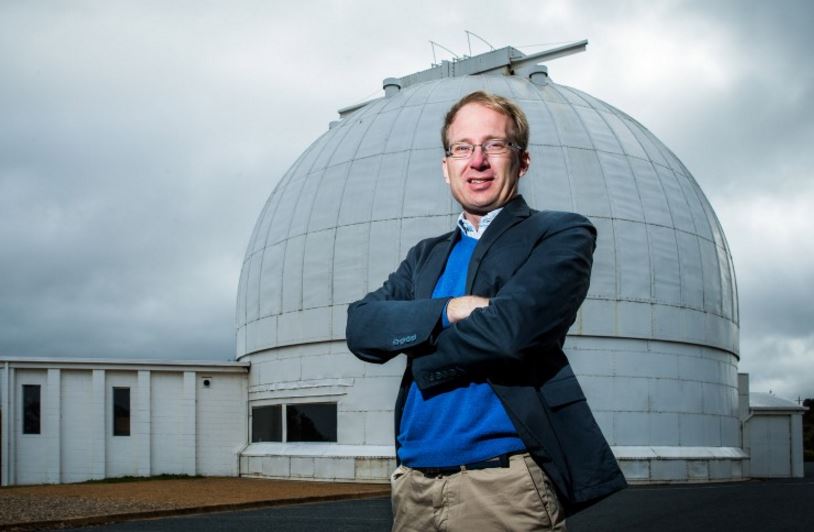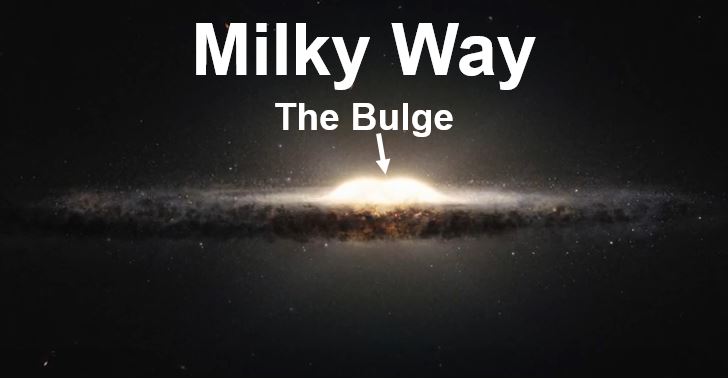The oldest star ever to be detected has been discovered by an international team of scientists. The star existed just 300 million years after the Big Bang (when our Universe was born) and before our galaxy, the Milky Way – which is 13.4 billion years old – was formed.
The team of scientists, from Australia, Chile, France, Germany, Poland, Sweden, the US and UK, published the findings from their study in the peer-reviewed journal Nature.
The super-old star was found near the center of our galaxy, in the ‘Bulge’. Hubblesite.org describes the ‘Bulge’ as:
“A round structure made primarily of old stars, gas, and dust. The outer parts of the bulge are difficult to distinguish from the halo. The bulge of the Milky Way is roughly 10,000 light years across.”
 A hypernova (artist’s impression). (Image: anu.edu.au. Credit: European Southern Observatory)
A hypernova (artist’s impression). (Image: anu.edu.au. Credit: European Southern Observatory)
The authors said the ultra-ancient star is surprisingly pure, and has within it material from an even older star that died in a hypernova. A hypernova is a star explosion with significantly more force than a supernova.
Our galaxy formed around the old stars
Lead author, Louise Howes, a PhD student at The Australian National University (ANU), explained:
“These stars formed before the Milky Way, and the galaxy formed around them.”
After studying nine pure stars, the science team says its findings challenge theories today regarding the early environment of the Universe, from which these ultra-old stars were formed.
Ms. Howes said, regarding materials detected in these old stars:
“The stars have surprisingly low levels of carbon, iron and other heavy elements, which suggests the first stars might not have exploded as normal supernovae.”
“Perhaps they ended their lives as hypernovae – poorly understood explosions of probably rapidly rotating stars producing 10 times as much energy as normal supernovae.”
Finding these stars – a needle in a haystack
Project leader Prof. Martin Asplund, an astronomer at ANU’s Research School of Astronomy & Astrophysics, said detecting these pre-galaxy stars amongst the billions that exist in our Milky Way was like finding a needle in a haystack.
 Prof. Asplund at Mt Stromlo, ANU. (Image: anu.edu.au)
Prof. Asplund at Mt Stromlo, ANU. (Image: anu.edu.au)
Professor Asplund said, regarding the ANU SkyMapper:
“The ANU SkyMapper telescope has a unique ability to detect the distinct colours of anaemic stars – stars with little iron – which has been vital for this search.”
Initially, the team of astronomers and astrophysicists discovered a very old star on the edge of the Milky Way. They then concentrated on the dense central parts of our galaxy, where stars are known to have been formed even earlier.
The scientists searched through about five million stars that had been observed with SkyMapper to find the purest – and thus oldest – specimens.
 The oldest star was detected in The Bulge.
The oldest star was detected in The Bulge.
They then examined each one in more detail using the Anglo-Australian Telescope, a 3.9 metre telescope mounted on the equator at the Siding Spring Observatory near Coonabarabran, in New South Wales, as well as the Magellan telescope in Chile.
The scientists’ aim was to find out what these stars were made of.
The team also showed that these ancient stars have been at the centre of our galaxy since they were born, and are not just travelling through. This further suggests that they are probably the oldest known stars in the Universe.
Reference: “Extremely metal-poor stars from the cosmic dawn in the bulge of the Milky Way,” L. M. Howes, M. Ness, M. Asplund, A. R. Casey, S. C. Keller, G. Pietrzyński, D. Yong, D. M. Nataf, R. Poleski, I. Soszyński, K. Lind, C. Kobayashi, C. I. Owen, J. Skowron, M. S. Bessell, G. S. Da Costa, B. P. Schmidt, P. Tisserand, A. Udalski, Ł. Wyrzykowski, P. Pietrukowicz, M. K. Szymański, K. Ulaczyk, S. Kozłowski & P. Mróz. Nature. November 11th, 2015. DOI: 10.1038/nature15747.
ANU Video – Oldest stars found

